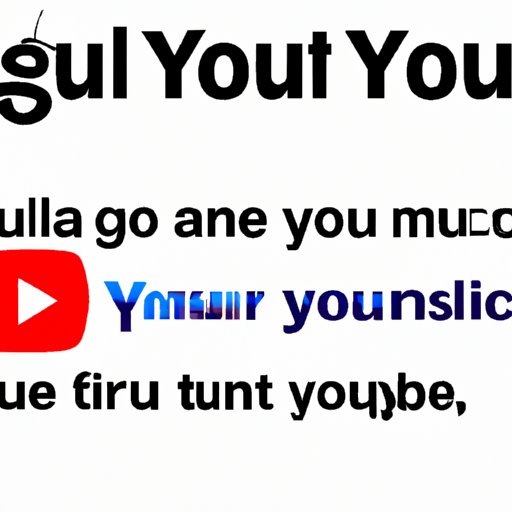Introduction
Music plays an important role in many videos uploaded to YouTube. Whether it’s a song playing in the background or a full-on cover version of a well-known pop tune, chances are you’ll need to get a music license if you want to legally use the music on YouTube. But what is a music license, and how do you get one? In this article, we’ll look at the steps involved in getting a music license for YouTube so that you can make sure your content is legal and compliant.
Research Licensing Options
The first step in getting a music license for YouTube is to identify the type of license needed. Different types of licenses may be required depending on the type of music being used. For example, a synchronization license may be needed for recordings that are synchronized with visual images, such as a music video. Alternatively, a mechanical license may be needed for recordings that are reproduced and distributed, such as a cover version of a popular song.
Once you’ve identified the type of license needed, you can begin researching the different options available. You can start by looking into the various music rights organizations, such as ASCAP, BMI, and SESAC. Each of these organizations has its own set of rules and regulations regarding music licensing, so it’s important to familiarize yourself with them before making any decisions.
Contact Music Rights Organizations
Once you’ve identified the type of license needed and researched the different options available, the next step is to reach out to the relevant music rights organization. This could be ASCAP, BMI, or SESAC, depending on which organization owns the rights to the music you’re using. When you contact the organization, inquire about their licensing terms and fees. This will help you determine which option best meets your needs and budget.
Negotiate Rates
Once you have some idea of the licensing terms and fees associated with the music you’re using, the next step is to negotiate a rate for the license. It’s important to understand what fits your budget and timeline before entering into any negotiations. Keep in mind that some organizations may offer special rates or discounts, so be sure to ask if any are available. Additionally, some organizations may require you to sign a contract before they will issue a license.
Secure the License
Once you’ve negotiated a rate for the license, the next step is to secure it. This involves signing the contract and making payment. Depending on the organization, you may also need to provide additional information or documents. Once all the paperwork is in order, the organization will issue the license and you’ll be able to use the music on YouTube.
Implement License
After you’ve secured the license, the next step is to implement it. The music rights organization should provide instructions on how to do this. Generally speaking, this involves providing the organization with certain information about your video, such as the title, description, and length. Once you’ve done this, you can upload the video to YouTube and begin using the music.
Conclusion
Getting a music license for YouTube can seem daunting, but it doesn’t have to be. By following the steps outlined in this article, you can ensure that your content is legal and compliant. Researching licensing options, contacting music rights organizations, negotiating rates, securing the license, and implementing it are all necessary steps in the process. With a bit of knowledge and effort, you can easily get the music license you need for YouTube.
(Note: Is this article not meeting your expectations? Do you have knowledge or insights to share? Unlock new opportunities and expand your reach by joining our authors team. Click Registration to join us and share your expertise with our readers.)

Great post! We use ALLTRACK for collection instead of ASCAP or BMI. Newer music rights organization. They are fantastic. Higher payout rates.